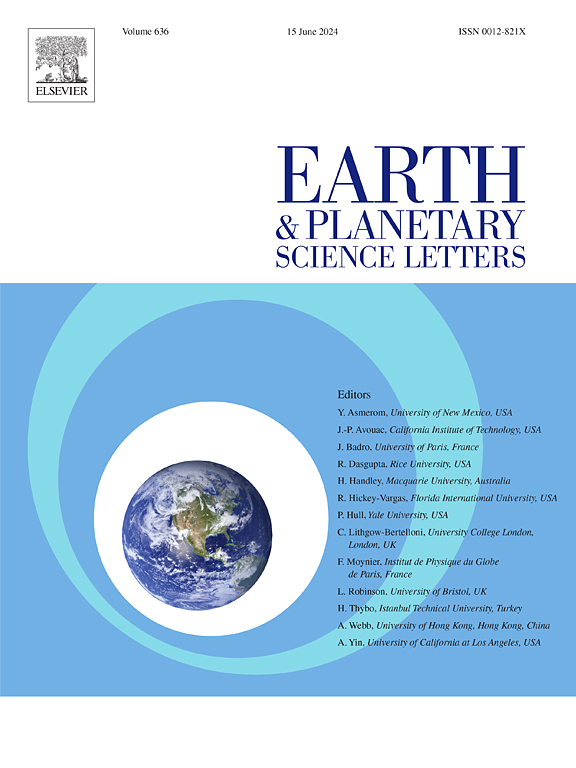Fluids and fault structures underlying the complex foreshock sequence of the 2021 Mw 6.1 Yangbi earthquake
IF 4.8
1区 地球科学
Q1 GEOCHEMISTRY & GEOPHYSICS
引用次数: 0
Abstract
The foreshocks preceding the 2021 Mw 6.1 Yangbi earthquake are one of the better-monitored complex foreshock sequences, however, the underlying physical processes and controlling factors are still in debate. In this study, we determine precise foreshock hypocenters, high-resolution earthquake source region velocity structure, and 3-D fault geometry for the 2021 Yangbi sequence by leveraging seismic data from 19 local stations. Our results suggest that natural fluid diffusion is likely a driver of the Yangbi foreshock sequence based on three lines of evidence: 1) regions with low Vs and relatively high Vp/Vs are widespread within the fault system; 2) earliest foreshocks exhibit diffusion-like migration front, and 3) foreshock evolution coincides with typical fault valving behavior, where the rupture of an Mw 4.6 foreshock broke a barrier of fluid flow. Besides, our results reveal that the fault system consists of three secondary fault zones (SFZ1-3) connected by a compressive stepover zone. SFZ1-2 and SFZ3 exhibit predominantly right-lateral strike-slip and normal faulting components, respectively. The extensional environment of SFZ3 may serve as the main channel for deep fluid upwelling into the stepover zone. The compressive stepover zone forms a region with high fluid pressure, facilitating further fluid diffusion into SFZ1-2, which can explain the earliest foreshock evolution that started in the stepover zone before migrating into SFZ1. Therefore, our observations also illuminate how 3-D fault geometry controls fluid diffusion within the fault system, which may further combine with stress triggering and possible aseismic slip to result in the complex 2021 Yangbi foreshock sequence.
求助全文
约1分钟内获得全文
求助全文
来源期刊

Earth and Planetary Science Letters
地学-地球化学与地球物理
CiteScore
10.30
自引率
5.70%
发文量
475
审稿时长
2.8 months
期刊介绍:
Earth and Planetary Science Letters (EPSL) is a leading journal for researchers across the entire Earth and planetary sciences community. It publishes concise, exciting, high-impact articles ("Letters") of broad interest. Its focus is on physical and chemical processes, the evolution and general properties of the Earth and planets - from their deep interiors to their atmospheres. EPSL also includes a Frontiers section, featuring invited high-profile synthesis articles by leading experts on timely topics to bring cutting-edge research to the wider community.
 求助内容:
求助内容: 应助结果提醒方式:
应助结果提醒方式:


